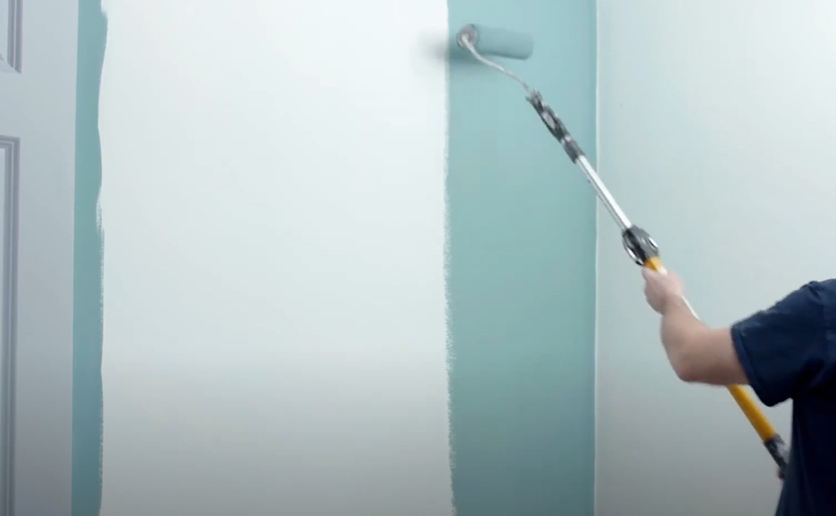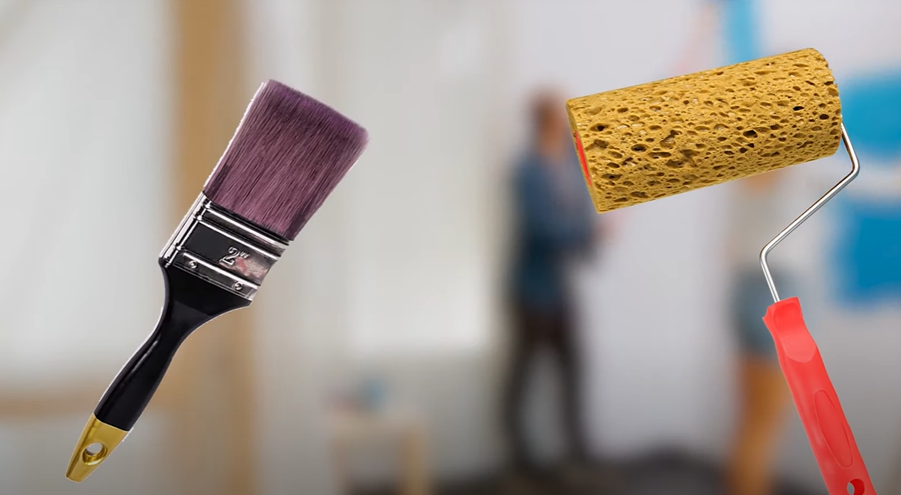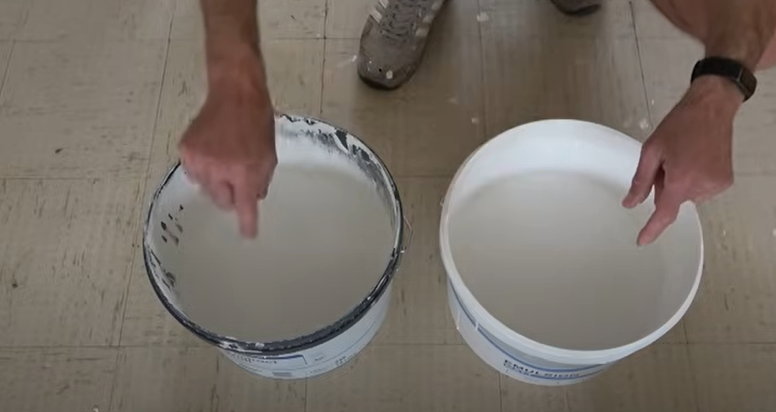Emulsion paint is popular for home interiors. But is it right for you?
Emulsion paint has become a favorite choice for many homeowners and decorators. Its versatility and ease of use make it an appealing option for various projects. But like any product, it has its strengths and weaknesses. Understanding these can help you make an informed decision before starting your next painting project.
In this blog post, we will explore the pros and cons of emulsion paint. This will give you a clear picture of what to expect. Whether you’re a DIY enthusiast or hiring a professional, knowing these details will benefit your planning and execution. Let’s dive in to learn more about emulsion paint’s advantages and disadvantages.
Table of Contents
What Is Emulsion Paint?
Emulsion paint is a water-based paint. It is commonly used for interior walls and ceilings. The paint consists of pigment, binder, and water. The pigment provides color. The binder helps the paint stick to surfaces. Water acts as a carrier for the pigment and binder.
Here are some key features of emulsion paint:
- Quick Drying: Dries faster than oil-based paints.
- Low Odor: Emits less smell, making it safer for indoor use.
- Easy to Clean: Surfaces painted with emulsion can be cleaned with water.
- Variety of Finishes: Available in matte, satin, and gloss finishes.
Emulsion paint is preferred for its ease of use. It does not require special thinners. It can be applied with brushes, rollers, or spray machines. Additionally, it is environmentally friendly. It has lower levels of volatile organic compounds (VOCs). This makes it a safer choice for homes and offices.
Emulsion paint has some limitations. It is not as durable as oil-based paints. It may not be suitable for high-traffic areas. It also might not adhere well to certain surfaces without proper preparation.
Overall, emulsion paint is a versatile and convenient option. It is especially suitable for indoor applications. Understanding its properties helps in making the right choice for painting projects.

Benefits Of Emulsion Paint
Emulsion paint is a popular choice for many painting projects. It offers several advantages that make it stand out. This blog post will discuss the benefits of emulsion paint. We will look at its quick drying time and low odor.
Quick Drying Time
One of the main benefits of emulsion paint is its quick drying time. This is especially helpful for busy people. You can apply the paint and see it dry in a few hours. This feature is very useful if you need to finish your project fast. It also allows you to apply multiple coats in a single day.
Here are some key points about quick drying time:
- Most emulsion paints dry to the touch within 1-2 hours.
- Second coats can often be applied after 4-6 hours.
- Quick drying reduces the risk of dust and debris sticking to the paint.
- This feature makes emulsion paint ideal for high-traffic areas.
Quick drying time also means less waiting around. You can start using the painted area sooner. This is a major advantage for families and businesses. It minimizes disruption to daily routines.
Low Odor
Another important benefit of emulsion paint is its low odor. Traditional paints often have a strong smell. This can be unpleasant and even harmful. Emulsion paints are different. They are water-based, which means they produce less odor.
Some key advantages of low odor include:
- Less irritation for people with allergies or sensitivities.
- Safer for use in homes with children and pets.
- More comfortable to work with in enclosed spaces.
- Reduces the need for extensive ventilation during painting.
Low odor also means that the painted area can be occupied sooner. There is no need to wait for the smell to dissipate. This is a significant benefit for homes and offices. It makes the painting process more convenient and pleasant.
Durability Factors
Emulsion paint is a popular choice for both interior and exterior walls. It is known for its smooth finish and durability. People often choose it because it is water-based and has a low level of harmful chemicals.
Resistance To Fading
One key feature of emulsion paint is its resistance to fading. Fading occurs when colors lose their brightness over time. This can happen because of sunlight or other factors. Emulsion paint performs well in this aspect for several reasons:
- UV Resistance: Emulsion paints often contain additives that make them resistant to ultraviolet (UV) light. This helps the colors stay bright and vibrant for longer periods.
- Quality Pigments: High-quality pigments are used in emulsion paints. These pigments do not break down easily, which helps in maintaining the color.
- Water-Based Formulation: Being water-based, emulsion paints are less likely to suffer from chemical changes that can lead to fading.
While emulsion paint is generally good at resisting fading, it is not completely immune. Factors like extreme weather conditions can still affect its longevity. But compared to other types of paint, it holds up quite well.
Washability
Another important factor is washability. Walls can get dirty over time, and the ability to clean them is crucial. Emulsion paint scores high in this regard:
- Easy to Clean: Emulsion paint surfaces are smooth. This makes it easy to wipe off dirt and stains with a damp cloth.
- Resistant to Scrubbing: You can scrub the surface without damaging the paint. This is especially useful in homes with kids or pets.
- Stain Resistance: The paint is also resistant to common stains, making it easier to maintain.
While emulsion paint is highly washable, there are some things to keep in mind. Use mild cleaning agents and avoid harsh chemicals. Over time, repeated scrubbing can still cause some wear and tear. But for regular household cleaning, emulsion paint proves to be a reliable choice.
Cost Considerations
Emulsion paint is a popular choice for many homeowners. Explore the cost considerations of emulsion paint, focusing on affordability and long-term value.
Affordability
One of the main attractions of emulsion paint is its affordability. It’s often cheaper than other types of paint, such as oil-based paints.
Here are some reasons why emulsion paint is affordable:
- Lower production costs. Made with water, it’s cheaper to produce.
- Easier application. It requires fewer coats to achieve good coverage.
- Quick drying time. This means less labor cost for professional painters.
Additionally, emulsion paint is widely available. You can find it in most hardware stores. This availability helps keep the prices competitive. For those on a budget, emulsion paint is a cost-effective option.
Long-term Value
While emulsion paint is affordable, it also offers good long-term value. It is durable and can last for many years without significant fading or peeling.
Here are some benefits in terms of long-term value:
- Resistant to moisture. Ideal for bathrooms and kitchens.
- Easy to clean. Most stains can be wiped off with a damp cloth.
- Less maintenance. Requires fewer touch-ups compared to other paints.
Investing in emulsion paint might save money in the long run. It’s cost-effective both initially and over time. Many homeowners appreciate its balance of affordability and durability.
Environmental Impact
Emulsion paint is a popular choice for interior and exterior painting. It’s known for its smooth finish and durability. But, like any product, it has its pros and cons. One important aspect to consider is its environmental impact. Understanding the eco-friendliness and chemical content of emulsion paint can help you make an informed decision.
Eco-friendly Options
Many manufacturers now offer eco-friendly emulsion paints. These paints are designed to have a lower impact on the environment. Here are some features of eco-friendly emulsion paints:
- Low or zero VOCs: Volatile Organic Compounds (VOCs) are harmful chemicals that can evaporate into the air. Eco-friendly paints have reduced levels of these compounds.
- Natural ingredients: These paints use natural ingredients instead of synthetic chemicals. This reduces the overall environmental footprint.
- Biodegradable: Some eco-friendly paints are biodegradable. This means they break down naturally without harming the environment.
Choosing an eco-friendly paint can contribute to a healthier environment. It’s a small step that can make a big difference. Here’s a comparison of traditional vs. eco-friendly emulsion paints:
| Feature | Traditional Emulsion Paint | Eco-Friendly Emulsion Paint |
|---|---|---|
| VOCs | High | Low or None |
| Ingredients | Synthetic | Natural |
| Biodegradable | No | Yes |
Volatile Organic Compounds (vocs)
Volatile Organic Compounds (VOCs) are chemicals found in many paints, including emulsion paints. They can evaporate into the air and cause health issues. High levels of VOCs can lead to headaches, dizziness, and respiratory problems. Long-term exposure can be even more harmful.
VOCs are released as the paint dries. This is why you might notice a strong smell when painting. It’s important to ensure proper ventilation during and after painting to reduce exposure.
Here are some tips to reduce exposure to VOCs:
- Choose paints labeled as low-VOC or no-VOC.
- Ensure good ventilation by opening windows and using fans.
- Take breaks to get fresh air if painting for long periods.
By being aware of VOCs and their effects, you can make safer choices. Opting for low-VOC paints and ensuring proper ventilation can help create a healthier living environment.
Application Techniques
There are different techniques to apply it. Choosing the right one can make a big difference.
Brush Vs. Roller
Using a brush or roller for emulsion paint has its own pros and cons. A brush is great for small areas and detailed work. It allows for more control. A brush can reach corners and edges well. But, it can leave brush marks and takes longer to cover large areas.
On the other hand, a roller covers large areas quickly. It provides a smooth finish and is ideal for walls and ceilings. It is easy to use and saves time. But, a roller cannot reach corners and edges well. It may also splatter paint if not used carefully.

| Brush | Roller |
|---|---|
| Great for small areas | Covers large areas quickly |
| More control | Smooth finish |
| Reaches corners and edges | Ideal for walls and ceilings |
| Leaves brush marks | May splatter paint |
| Takes longer | Easy to use |
Spray Application
Spray application is another technique for emulsion paint. It is fast and efficient. A sprayer can cover large areas very quickly. This method is perfect for big projects. It provides a very smooth finish and reaches difficult areas. But, spray application requires more preparation. You need to cover and protect areas not to be painted.
Using a sprayer can be messy. It may result in overspray. This means paint can get on unwanted areas. Safety is also important. Wearing a mask and goggles is a must. The equipment can be costly. It may not be ideal for small projects.
- Fast and efficient
- Covers large areas quickly
- Very smooth finish
- Reaches difficult areas
- Requires more preparation
- Can be messy
- May result in overspray
- Safety equipment needed
- Costly equipment
Limitations Of Emulsion Paint
Emulsion paint is a popular choice for many because of its ease of use and quick-drying properties. It is water-based, which makes it environmentally friendly and less odorous than other paints. While it has many advantages, there are some limitations to be aware of.
Not Suitable For All Surfaces
Emulsion paint works great on many surfaces, but it is not ideal for all. Some surfaces can cause issues with adhesion, leading to peeling and flaking. Here are some examples where emulsion paint might struggle:
- Metal surfaces: Emulsion paint does not adhere well to metals without a primer.
- Glossy surfaces: The paint may not stick properly to high-gloss surfaces.
- Wet or damp walls: Moisture can prevent the paint from drying properly.
For these surfaces, it is important to use a suitable primer or choose a different type of paint. Additionally, you might need to prepare the surface more thoroughly. Sanding glossy surfaces or using a sealant on damp walls can improve adhesion.
Less Resistant To Scratches
One of the drawbacks of emulsion paint is its lower resistance to scratches. This can be a problem in high-traffic areas or on surfaces that are frequently touched. Here are some points to consider:
- High-traffic areas: Hallways and corridors may show wear quickly.
- Children’s rooms: Walls might get scratched from toys and activities.
- Furniture contact: Areas where furniture touches the walls can get damaged.
To mitigate this issue, using a higher quality emulsion paint can offer better durability. Applying a protective topcoat can also help. Regular maintenance and touch-ups might be necessary to keep the paint looking fresh.
Conclusion And Recommendations
Emulsion paint is a popular choice for many homeowners and professionals. It offers several advantages, such as easy application and quick drying time.
Best Practices For Use
Using emulsion paint correctly can enhance its benefits. Here are some best practices to follow:
- Surface Preparation: Clean and dry the surface before applying the paint. Remove any dust, grease, or old paint.
- Primer: Use a primer to ensure better adhesion and a smooth finish. This step is crucial for new or bare surfaces.
- Tools: Use quality brushes or rollers for application. This ensures even coverage and reduces streaks.
- Application: Apply the paint in thin, even coats. Allow each coat to dry completely before adding another.
- Ventilation: Ensure good ventilation in the area you are painting. This helps the paint dry faster and reduces fumes.
Following these practices can make a significant difference in the final result. Proper application not only enhances the appearance but also extends the life of the paint job.
Alternatives To Consider
While emulsion paint has many benefits, there are other options to consider. Here are a few alternatives:
| Paint Type | Pros | Cons |
|---|---|---|
| Oil-Based Paint | Durable, Good for high-traffic areas | Long drying time, Strong fumes |
| Latex Paint | Quick drying, Easy to clean | Not as durable as oil-based |
| Chalk Paint | Great for furniture, Easy to distress | Expensive, Requires a topcoat |
Choosing the right paint depends on your specific needs. Consider the surface, the desired finish, and the environment. This will help you make an informed decision.
Conclusion
Emulsion paint offers many benefits for your painting needs. It’s easy to apply. It dries quickly. It’s also low in odor. These features make it a popular choice. But, it does have some downsides. It may not be as durable.
It might need more coats. Understand your needs before choosing. Emulsion paint can be a great option. Weigh the pros and cons carefully. Make an informed decision. Your space deserves the best. Happy painting!
What is Emulsion paint price 20 liter
The price of 20 liters of emulsion paint can vary widely depending on the brand, quality, and region. On average, you might expect to pay anywhere from:
- Budget options: Around $25 to $40 for 20 liters
- Mid-range options: Around $40 to $70 for 20 liters
- Premium or designer paints: Can range from $70 to $120 or more for 20 liters

